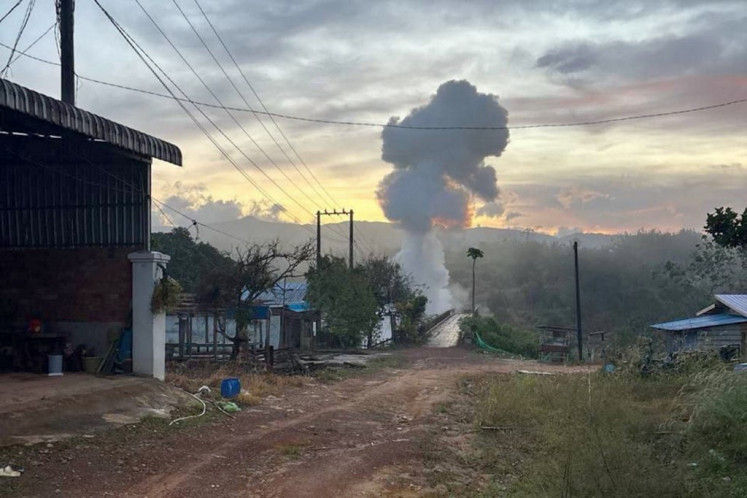Popular Reads
Top Results
Can't find what you're looking for?
View all search resultsPopular Reads
Top Results
Can't find what you're looking for?
View all search resultsFirst assessment finds Borneo elephant is endangered
The elephant is thought to roam primarily in Malaysia's Sabah and sometimes Indonesia's East Kalimantan.
Change text size
Gift Premium Articles
to Anyone
 A wildlife official attends to an orphaned three-month-old baby Borneo pygmy elephant “Joe“ at Lok Kawi Wildlife Park in Kota Kinabalu in Malaysia's Sabah state on February 6, 2013. The first assessment of the pint-sized Bornean elephant by a global conservation authority concluded on June 27, 2024, that the animal is endangered, with only an estimated 1,000 left in the wild. (AFP/MOHD RASFAN)
A wildlife official attends to an orphaned three-month-old baby Borneo pygmy elephant “Joe“ at Lok Kawi Wildlife Park in Kota Kinabalu in Malaysia's Sabah state on February 6, 2013. The first assessment of the pint-sized Bornean elephant by a global conservation authority concluded on June 27, 2024, that the animal is endangered, with only an estimated 1,000 left in the wild. (AFP/MOHD RASFAN)
T
he first assessment of the pint-sized Bornean elephant by a global conservation authority concluded Thursday that the animal is endangered, with only an estimated 1,000 left in the wild.
The finding by the International Union for Conservation of Nature (IUCN), known for its "Red List" of endangered wildlife, is the first time the elephant has been assessed as a distinct subspecies.
"The population has diminished over the past 75 years, initially due to extensive logging of Borneo's forests destroying the majority of the Bornean elephants' habitat," the IUCN said in an update to its Red List on Thursday.
"As the human population has rapidly expanded in [Malaysia's] Sabah, elephants are entering human-dominated landscapes more often in search of food, where they may cause damage to crops and face retribution killing," the group added.
It warned that ongoing habitat destruction, particularly linked to palm oil cultivation, as well as timber plantations and mining, further threatens the species.
And it singled out the planned Pan Borneo Highway as risking the future of the smallest Asian elephant species.
Standing between around eight and 10 feet tall, genetic evidence shows Borneo elephants diverged from their cousins in mainland Asia and Sumatra some 300,000 years ago, according to the World Wide Fund for Nature (WWF) conservation group.
Sometimes called Borneo pygmy elephants, the species has developed proportionally larger ears, longer tails and straighter tusks than other Asian elephants.
The island territory of Borneo is shared between Malaysia, Brunei and Indonesia, though the elephant is thought to roam primarily in Sabah and sometimes Indonesia's East Kalimantan.










